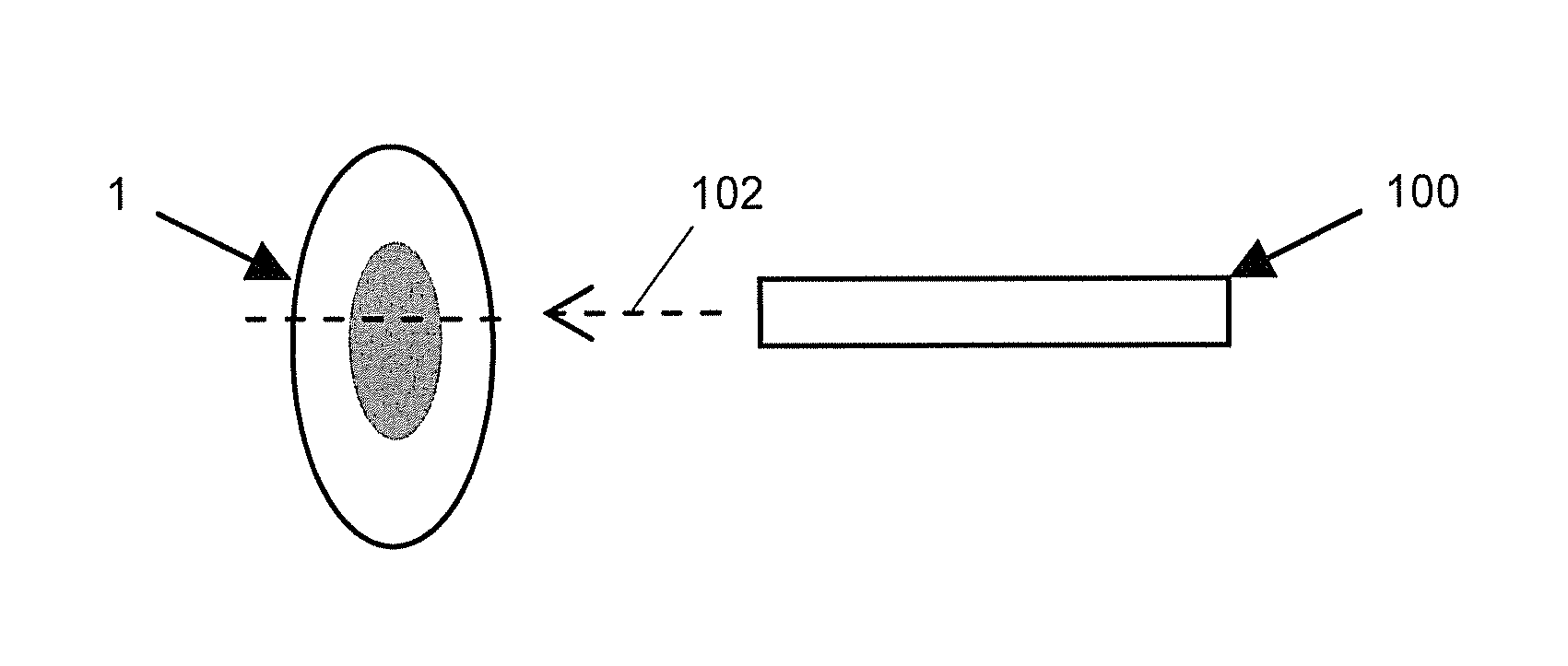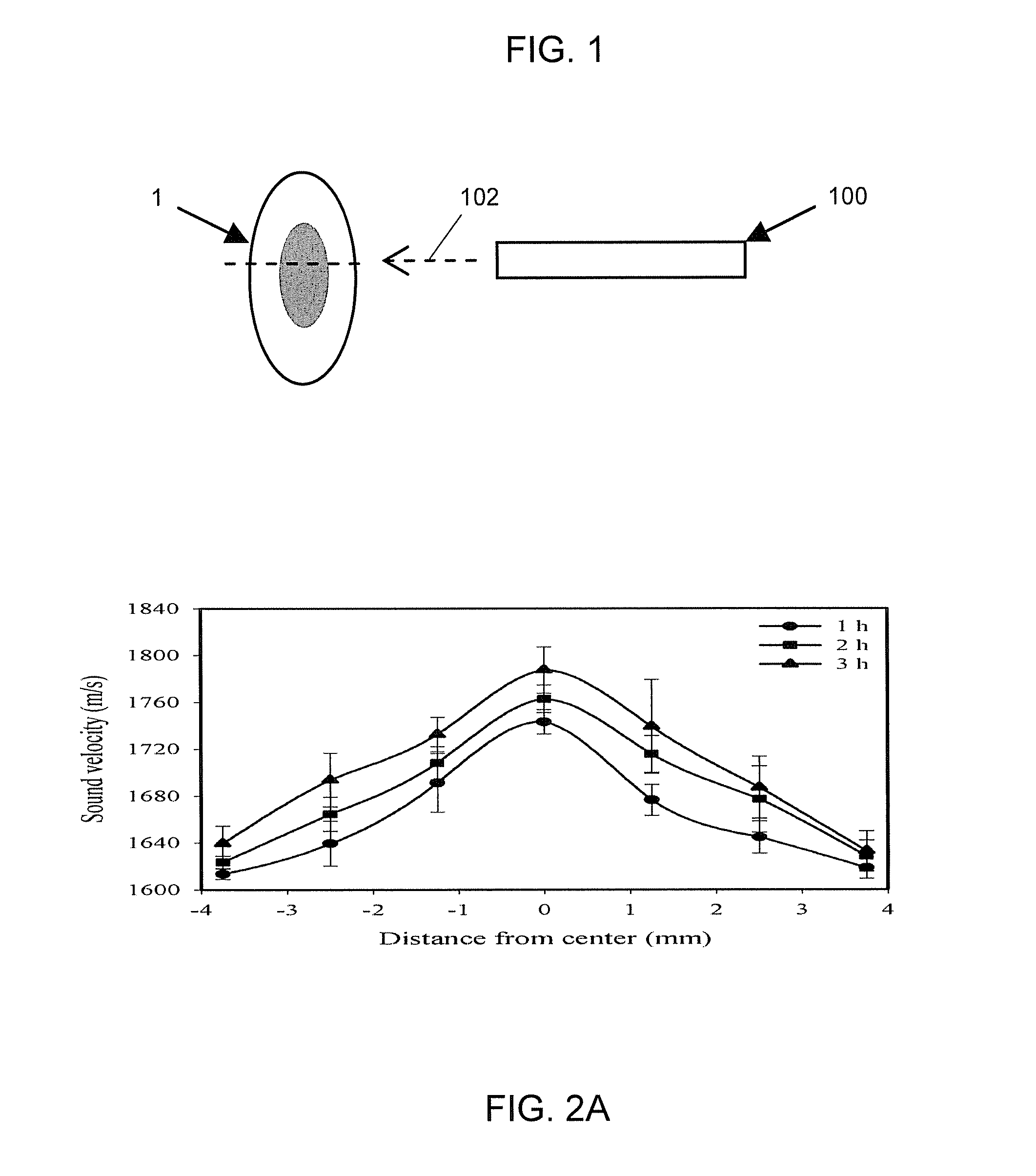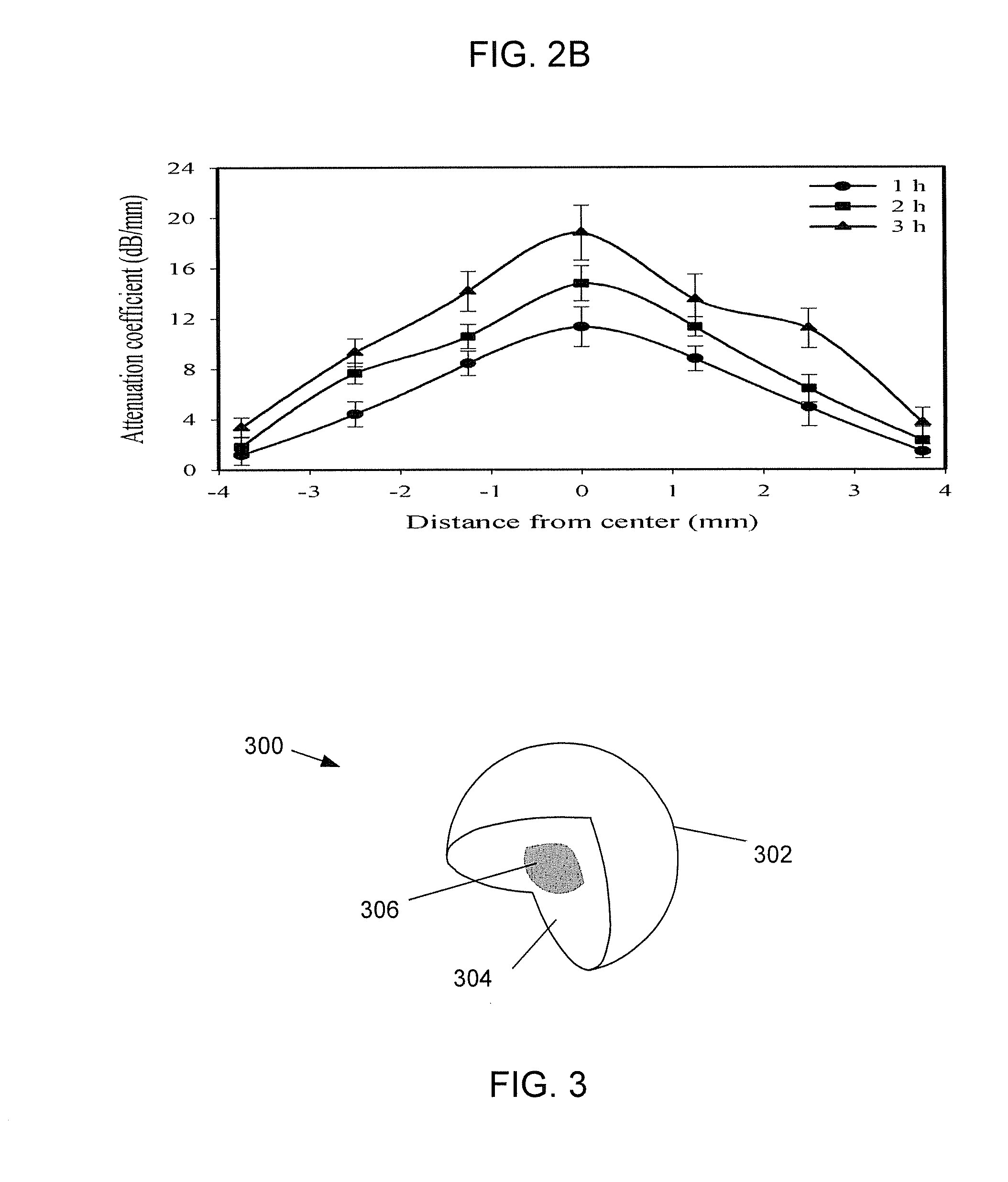Preoperative and Intra-Operative Lens Hardness Measurement by Ultrasound
a lens hardness and ultrasound technology, applied in the field of preoperative and intraoperative lens hardness measurement by ultrasound, can solve the problems of reducing the perception of blue colors, visual acuity, and blindness of associate eyes, so as to reduce the rate of complications, improve surgical performance, and reduce surgical procedure time
- Summary
- Abstract
- Description
- Claims
- Application Information
AI Technical Summary
Benefits of technology
Problems solved by technology
Method used
Image
Examples
experimental verification
[0047]Exemplary embodiments of lens classification using ultrasound techniques according to the present disclosure have been tested and found to be satisfactory a series of experiments using porcine eyes. For such tested embodiments, a 46 MHz high frequency needle transducer (similar to that described for FIG. 5) with a diameter of 0.5 mm was designed and fabricated for intraoperative measurement of acoustic properties in lens.
[0048]Multiple techniques have thus been proven (e.g., sound velocity, attenuation, and direct elastic modulus measurements) and correlated to mechanical measurements. Surgical correlation between the ultrasound measurements and total operating energy (operating power×time) have correspondingly been made. The regional change of acoustic parameters corresponding to the variation of hardness in cataract lens can be estimated before the phacoemulsification surgical operation. This is supported by the experiments on enucleated porcine eyes which showed that ultras...
PUM
 Login to View More
Login to View More Abstract
Description
Claims
Application Information
 Login to View More
Login to View More - R&D
- Intellectual Property
- Life Sciences
- Materials
- Tech Scout
- Unparalleled Data Quality
- Higher Quality Content
- 60% Fewer Hallucinations
Browse by: Latest US Patents, China's latest patents, Technical Efficacy Thesaurus, Application Domain, Technology Topic, Popular Technical Reports.
© 2025 PatSnap. All rights reserved.Legal|Privacy policy|Modern Slavery Act Transparency Statement|Sitemap|About US| Contact US: help@patsnap.com



